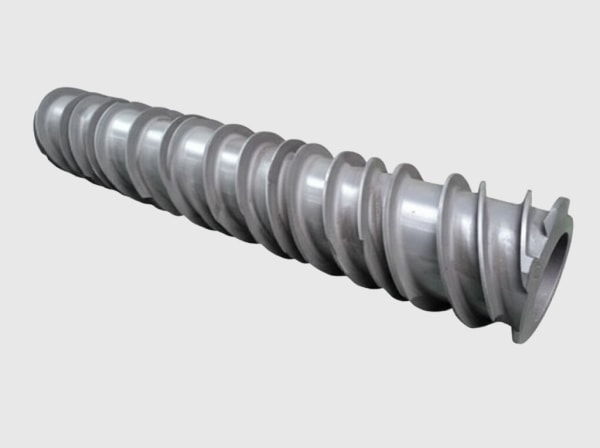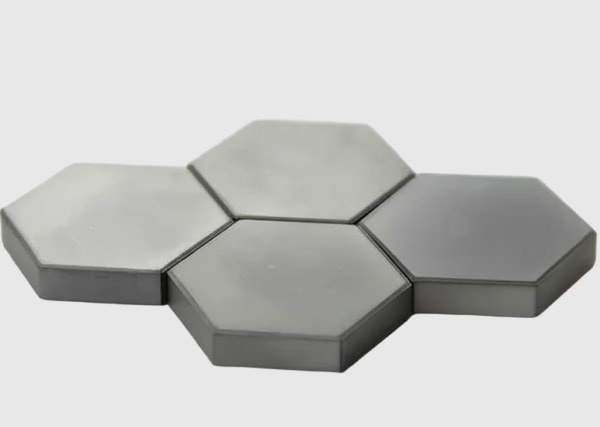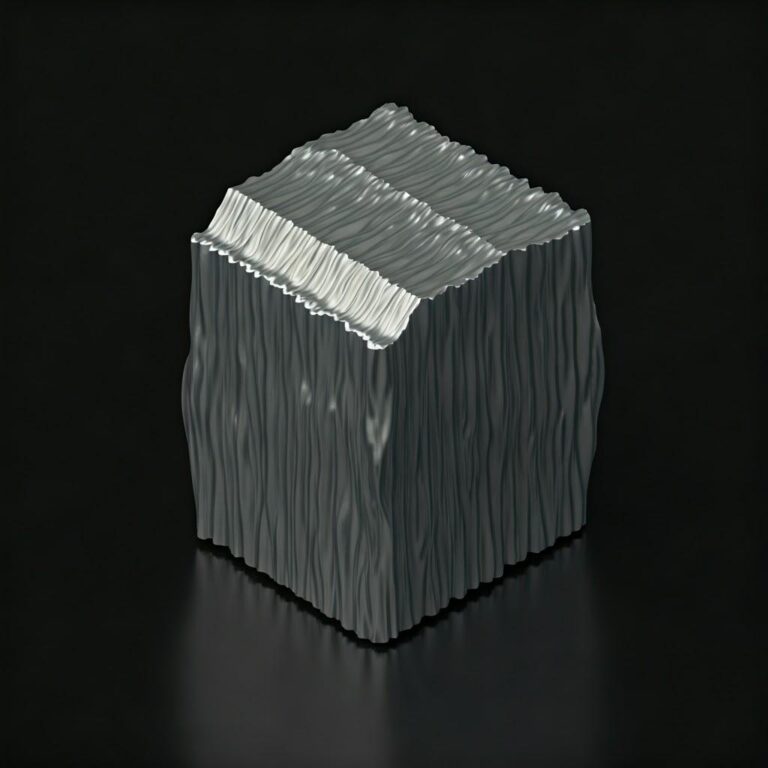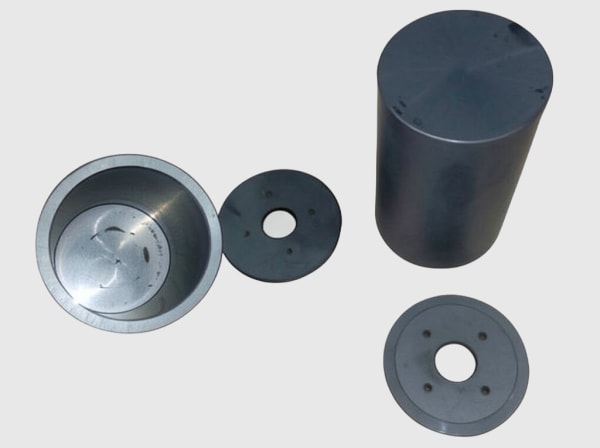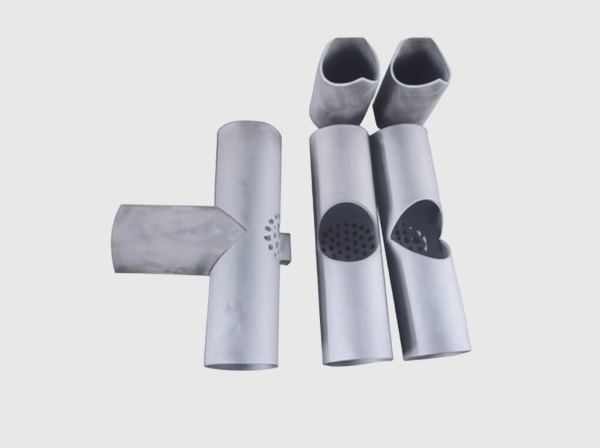SiC in Fluid Handling: Ensuring Efficiency & Purity
Introduction – What are custom silicon carbide products for fluid handling and why are they essential in high-performance industrial applications?
In the realm of high-performance industrial applications, the efficient and reliable management of fluids is paramount. Whether dealing with corrosive chemicals, abrasive slurries, high-temperature liquids, or ultra-pure media, the materials used in fluid handling systems must withstand extreme conditions without compromising performance or purity. Custom silicon carbide (SiC) products have emerged as a critical solution in this demanding space. Silicon carbide, an advanced technical ceramic, offers an exceptional combination of properties including outstanding hardness, superior wear resistance, excellent chemical inertness, high thermal conductivity, and stability at elevated temperatures. These characteristics make it an ideal material for components that are in direct contact with challenging fluids.
Unlike standard off-the-shelf parts, custom SiC components are specifically engineered to meet the precise requirements of a particular fluid handling application. This customization can encompass complex geometries, tight tolerances, specific surface finishes, and tailored material grades, ensuring optimal performance, longevity, and system integrity. In industries ranging from semiconductor manufacturing and chemical processing to aerospace and power generation, the demand for materials that can push operational boundaries is ever-increasing. Custom silicon carbide components, such as seals, bearings, nozzles, pump parts, and valve trims, are not just upgrades but often essential enablers of advanced processes, ensuring efficiency, minimizing downtime, and maintaining product purity in environments where conventional materials would rapidly fail. The ability to tailor SiC parts to specific fluid dynamics and chemical compositions allows engineers and procurement managers to specify solutions that deliver unparalleled reliability and cost-effectiveness over the component’s lifecycle.
Main Applications of SiC in Fluid Handling Systems
The versatility and robustness of silicon carbide technical ceramics make them indispensable in a wide array of fluid handling applications across numerous industries. Their ability to handle aggressive media, high pressures, and extreme temperatures ensures operational reliability and longevity. Below are some key applications:
- Mechanical Seals and Bearings: SiC is widely used for seal faces and bearings in pumps and mixers. Its low friction coefficient (especially in self-lubricating reaction-bonded SiC grades), high hardness, and excellent wear resistance prevent leakage and ensure long service life, even with abrasive fluids or poor lubrication conditions. This is critical in chemical processing, oil and gas, and pharmaceutical industries.
- Pump Components: Impellers, casings, liners, and shafts made from SiC can handle highly corrosive and abrasive slurries. Industries like mining, metallurgy, and flue gas desulfurization (FGD) in power plants benefit significantly from SiC pump components that resist wear and chemical attack, reducing maintenance and replacement costs.
- Valve Components: Valve seats, balls, plugs, and liners fabricated from silicon carbide offer superior performance in controlling the flow of aggressive fluids. Their dimensional stability and resistance to erosion ensure tight shut-off and precise flow regulation in petrochemical, power electronics cooling, and industrial manufacturing sectors.
- Nozzles and Orifices: For applications requiring precise fluid dispensing, spraying, or flow control, SiC nozzles offer exceptional wear resistance, maintaining orifice geometry and spray patterns for longer periods than metal or other ceramic alternatives. This is crucial in chemical etching, sandblasting, and high-pressure cleaning.
- Heat Exchanger Tubes: In high-temperature and corrosive fluid environments, SiC heat exchanger tubes provide excellent thermal conductivity and resistance to fouling and chemical attack, making them suitable for chemical processing, waste incineration, and energy recovery systems.
- Semiconductor Fluid Management: The semiconductor industry demands ultra-high purity. High-purity SiC components (like CVD SiC) are used for handling aggressive cleaning agents, etchants, andCMP slurries, ensuring minimal contamination and maintaining process integrity. Applications include wafer handling components, injector tubes, and plasma etch chamber parts.
- Aerospace and Defense: Lightweight SiC components are finding use in fuel handling systems, hydraulic actuators, and other critical fluid management applications where extreme temperatures and harsh conditions are encountered.
These applications highlight the critical role of silicon carbide in enhancing the performance, reliability, and lifespan of fluid handling equipment, particularly in environments where chemical resistance and wear resistance are paramount.
Why Choose Custom Silicon Carbide for Your Fluid Systems?
Opting for custom silicon carbide components in fluid handling systems offers a multitude of advantages over standard materials and off-the-shelf ceramic parts, particularly when dealing with demanding operational conditions. Customization allows for designs tailored to specific application needs, maximizing efficiency, longevity, and safety.
Key benefits include:
- Exceptional Wear and Abrasion Resistance: Silicon carbide is one of the hardest commercially available materials, second only to diamond. This makes SiC wear parts extremely resistant to abrasion from slurries, particulates, and high-velocity fluid flow, significantly extending component life and reducing maintenance intervals. Custom designs can further optimize wear profiles.
- Superior Chemical Inertness: SiC exhibits outstanding resistance to a wide range of corrosive chemicals, including strong acids, alkalis, and oxidizing agents, even at elevated temperatures. This makes it ideal for handling aggressive media in chemical processing, petrochemical, and pharmaceutical industries without material degradation or leaching, ensuring high-purity fluid transport.
- High-Temperature Stability & Thermal Shock Resistance: Silicon carbide maintains its mechanical strength and structural integrity at very high temperatures (up to 1650°C or higher for some grades). Its good thermal conductivity coupled with a relatively low coefficient of thermal expansion gives it excellent thermal shock resistance, crucial for applications with rapid temperature cycling in fluid streams.
- Enhanced Purity and Reduced Contamination: For industries like semiconductor manufacturing, food processing, and pharmaceuticals, maintaining fluid purity is critical. Certain grades of SiC, such as sintered SiC (SSiC) and CVD SiC, offer very high purity and low particle generation, minimizing contamination risks. Custom designs can eliminate dead zones or crevices where contaminants might accumulate.
- Optimal Thermal Management: The high thermal conductivity of SiC (comparable to or exceeding many metals) is beneficial for applications requiring heat dissipation, such as in high-performance mechanical seals or heat exchangers. Custom designs can incorporate cooling channels or optimized geometries for efficient thermal transfer.
- Dimensional Stability: SiC parts exhibit excellent dimensional stability over a wide range of temperatures and pressures, ensuring that critical tolerances are maintained throughout the operational life of the component. This is vital for precision components like valve seats and pump bearings.
- Design Flexibility with Customization: Customizing SiC components allows engineers to specify complex geometries, precise tolerances, specific surface finishes, and integrate features that improve overall system performance. This includes optimizing flow paths, reducing turbulence, and enhancing sealing capabilities, leading to more efficient and reliable fluid handling systems.
- Long-Term Cost-Effectiveness: While the initial investment in custom SiC components might be higher than conventional materials, their extended service life, reduced downtime, lower maintenance requirements, and improved process efficiency often result in a significantly lower total cost of ownership.
By choosing custom silicon carbide, industries can leverage these properties to build fluid systems that are not only more robust and reliable but also contribute to enhanced productivity and safety in critical operations. The ability to procure application-specific SiC solutions is a game-changer for engineers tackling the toughest fluid handling challenges.
Recommended SiC Grades and Compositions for Fluid Handling
Selecting the appropriate grade of silicon carbide is crucial for optimizing performance in specific fluid handling applications. Different manufacturing processes yield SiC materials with varying properties. Here are some commonly recommended grades:
| SiC Grade | Key Characteristics for Fluid Handling | Typical Applications |
|---|---|---|
| Reaction-Bonded Silicon Carbide (RBSiC or SiSiC) | Good wear resistance, excellent thermal conductivity, moderate chemical resistance (free silicon can be attacked by strong alkalis or hydrofluoric acid), good thermal shock resistance, relatively easier to produce complex shapes, cost-effective for many applications. Often self-lubricating due to graphite content in some variants. | Mechanical seal faces, pump bearings, nozzles, wear liners, kiln furniture. Suitable for moderately corrosive and abrasive fluids. |
| Sintered Silicon Carbide (SSiC) | Extremely high hardness, superior wear and corrosion resistance (no free silicon), high strength, excellent chemical inertness across a wide pH range, high-temperature stability, can be produced in high purity. | Demanding mechanical seals, valve components (balls, seats), pump impellers and casings, bearings for aggressive chemical or abrasive slurry handling, semiconductor equipment parts. Ideal for high-purity fluid systems. |
| Nitride-Bonded Silicon Carbide (NBSiC) | Good wear resistance, good thermal shock resistance, high fracture toughness compared to other SiC grades, good resistance to molten non-ferrous metals. Formed by nitriding silicon with SiC grains. | Components for molten metal handling, thermocouple protection tubes, some types of wear liners and nozzles where impact resistance is a consideration. Less common for general fluid handling but useful in specific high-temperature niches. |
| Graphite-Loaded Silicon Carbide (e.g., some RBSiC variants) | Enhanced self-lubricating properties due to graphite inclusion, excellent dry running capability, good thermal shock resistance. | Mechanical seals for applications with intermittent dry running, bearings requiring low friction. |
| Chemical Vapor Deposited Silicon Carbide (CVD SiC) | Ultra-high purity (99.999%+), exceptional chemical resistance, excellent surface finish possible, can coat complex graphite or SiC substrates. Higher cost. | Semiconductor process components (etch rings, showerheads, liners), high-purity chemical handling, optical components. Critical where ultra-pure fluid integrity is essential. |
| Recrystallized Silicon Carbide (RSiC) | High porosity, excellent thermal shock resistance, good for high temperatures but not typically for direct fluid containment due to porosity unless sealed. | Kiln furniture, burner nozzles, radiant tubes. May be used in specific fluid heating applications if porosity is managed. |
When choosing a SiC grade for fluid handling, procurement managers and engineers should consider:
- Fluid Composition: Acidity, alkalinity, presence of abrasive particles, and specific chemical reactivity.
- Operating Temperature and Pressure: Determines the need for high-temperature strength and thermal shock resistance.
- Purity Requirements: Critical for semiconductor, pharmaceutical, and food-grade applications.
- Mechanical Stresses: Impact, load, and friction experienced by the component.
- Cost Considerations: Balancing performance requirements with budget constraints. SSiC and CVD SiC are generally more expensive but offer superior properties for the most demanding applications.
Consulting with a knowledgeable custom silicon carbide supplier is essential to select the optimal grade and design for your specific fluid handling challenge, ensuring longevity and efficiency.
Critical Design Considerations for SiC Fluid Handling Components
Designing components with silicon carbide for fluid handling applications requires careful consideration of its unique material properties. While SiC offers exceptional performance, its ceramic nature (hardness and brittleness) necessitates specific design approaches to ensure manufacturability, reliability, and optimal functionality.
-
Managing Brittleness: SiC is a brittle material with low fracture toughness compared to metals. Designs should aim to minimize stress concentrations. This involves:
- Generous radii on internal and external corners.
- Avoiding sharp edges and notches.
- Ensuring uniform wall thicknesses to prevent stress points during thermal cycling or mechanical loading.
- Considering compressive loading designs where possible, as ceramics are much stronger in compression than in tension.
-
Geometric Complexity and Manufacturability: While advanced forming techniques allow for complex SiC shapes, simpler geometries are generally more cost-effective to produce.
- Discuss design complexity with the SiC component manufacturer early in the process.
- Consider modular designs where highly complex parts can be assembled from simpler SiC components.
- Factor in the limitations of machining hard-fired SiC; near-net-shape forming is preferred.
-
Interface and Mating Surfaces: For components like seals, valves, and bearings, the design of mating surfaces is critical.
- Specify appropriate surface flatness and finish for effective sealing.
- Consider the differential thermal expansion if SiC is mated with other materials (e.g., metal housings). Interference fits and mounting strategies must account for this.
- Flow Dynamics: The internal geometry of fluid handling components like pump volutes, valve bodies, and nozzles should be designed to optimize flow, minimize turbulence, reduce erosion, and prevent cavitation. CFD (Computational Fluid Dynamics) analysis can be beneficial for complex SiC fluid pathway designs.
- Wall Thickness and Pressure Ratings: Adequate wall thickness must be maintained to withstand operational pressures and mechanical loads. This needs to be balanced against the desire for thinner walls for better thermal conductivity in heat exchange applications or for weight reduction. Finite Element Analysis (FEA) is often used to validate designs under pressure.
-
Assembly and Mounting: Design considerations should extend to how the SiC component will be assembled into the larger system.
- Avoid point loads during clamping or assembly. Use gaskets or compliant layers to distribute loads.
- Design features for alignment and securement.
- Tolerances and Machinability: While very tight tolerances can be achieved on SiC parts through diamond grinding, this significantly increases cost. Specify tolerances that are genuinely required for functionality. Precision SiC machining is a specialized capability.
- Material Grade Selection in Design Phase: The chosen SiC grade (RBSiC, SSiC, etc.) can influence design rules due to slight variations in properties and manufacturing routes. For example, RBSiC may offer more flexibility for larger, complex shapes initially, while SSiC might be preferred for its superior chemical resistance despite potentially being harder to form into highly intricate designs without significant machining.
Collaborating closely with experienced technical ceramic engineers during the design phase is crucial. They can provide insights into design for manufacturability (DfM) specific to silicon carbide, helping to avoid costly redesigns and ensuring the final component meets all performance and reliability criteria for the fluid handling system.
Achievable Tolerances, Surface Finish & Dimensional Accuracy in SiC Fluid Parts
For silicon carbide components used in fluid handling systems, achieving precise dimensional accuracy, specific tolerances, and desired surface finishes is critical for functionality, efficiency, and longevity. These parameters directly impact sealing performance, flow characteristics, wear rates, and the overall reliability of pumps, valves, seals, and other precision SiC parts.
Tolerances:
Silicon carbide components are typically formed to near-net shape through processes like slip casting, extrusion, pressing, or injection molding (for green machining). After sintering (or reaction bonding), the material becomes extremely hard, making any subsequent material removal a challenging and costly process, usually requiring diamond tooling.
- As-Sintered Tolerances: Depending on the SiC grade, size, and complexity of the part, as-sintered tolerances are generally in the range of ±0.5% to ±2% of the dimension. For smaller, simpler parts, tighter as-sintered tolerances might be achievable.
- Ground/Machined Tolerances: For applications requiring higher precision, SiC components can be ground, lapped, and polished. Through these processes, very tight tolerances can be achieved:
- Dimensional tolerances: Down to ±0.001 mm (±1 µm) in some cases for critical features, although ±0.005 mm to ±0.025 mm (±5 µm to ±25 µm) is more common for precision ground parts.
- Geometric tolerances: Parallelism, flatness, perpendicularity, and concentricity can also be controlled to micrometer levels. For instance, flatness values of 1-2 helium light bands (HLB), equivalent to approximately 0.3-0.6 µm, are achievable for seal faces.
Achieving tighter tolerances invariably increases the cost due to extended machining times and specialized equipment. Therefore, it’s essential to specify only the level of precision necessary for the application’s functional requirements.
Surface Finish:
The surface finish of SiC fluid handling components is crucial, especially for dynamic seals, bearings, and parts requiring low friction or specific flow characteristics.
- As-Sintered Finish: The as-sintered surface roughness (Ra) can range from 1 µm to 5 µm or higher, depending on the forming method and SiC grade. This may be adequate for some static components or wear liners.
- Ground Finish: Grinding can improve surface finish significantly, typically achieving Ra values between 0.2 µm and 0.8 µm. This is often sufficient for many pump and valve components.
- Lapped/Polished Finish: For applications like mechanical seal faces or high-precision bearings, lapping and polishing are employed. These processes can achieve exceptionally smooth surfaces:
- Lapped surfaces: Ra values of 0.05 µm to 0.2 µm.
- Polished surfaces: Ra values as low as 0.01 µm to 0.025 µm (mirror finish). Such finishes minimize friction, wear, and leakage in dynamic sealing applications.
The required surface finish directly correlates with the manufacturing effort and cost. Specifying an overly smooth surface where it’s not needed can lead to unnecessary expenses.
Dimensional Accuracy:
Dimensional accuracy refers to the conformity of the manufactured part to the specified dimensions in the engineering drawing. For custom SiC parts, especially those with complex geometries or critical interface points, maintaining high dimensional accuracy is key. This is ensured through:
- Precise mold design and fabrication.
- Careful control of sintering or reaction-bonding processes to manage shrinkage consistently.
- Advanced metrology and inspection techniques, including CMM (Coordinate Measuring Machines), optical profilometers, and interferometers to verify dimensions and surface characteristics.
Close collaboration with a specialized SiC manufacturer is vital to understand the achievable limits for tolerances and surface finishes based on the selected SiC grade and part geometry. This ensures that the final components meet the stringent demands of modern fluid handling systems, providing reliable and efficient operation.
Essential Post-Processing Needs for Enhanced SiC Fluid Performance
While the inherent properties of silicon carbide make it an excellent material for fluid handling, certain post-processing steps are often essential to optimize its performance, durability, and suitability for specific applications. These treatments refine the component’s geometry, surface characteristics, or bulk properties, tailoring it precisely to the demands of the fluid system.
Common post-processing needs for SiC fluid handling components include:
-
Grinding:
After sintering or reaction bonding, SiC parts are extremely hard. Diamond grinding is the primary method used to achieve precise dimensional tolerances, improve surface finish from the as-sintered state, and create specific geometric features (e.g., flats, grooves, chamfers) that cannot be easily formed in the green state. This is crucial for parts like pump shafts, valve seats, and bearing races requiring tight fits or specific profiles for optimal fluid dynamics.
-
Lapping and Polishing:
For applications demanding exceptionally smooth and flat surfaces, such as mechanical seal faces or high-performance bearings, lapping and polishing are indispensable.
- Lapping: Uses fine abrasive slurries to achieve very tight flatness (often measured in light bands) and parallelism, critical for creating effective seals that minimize leakage.
- Polishing: Further refines the surface to a mirror-like finish (low Ra values), reducing friction, wear, and the potential for deposit adhesion in ultra-pure fluid systems or where boundary lubrication conditions exist.
These processes enhance the tribological performance of SiC dynamic components.
-
Edge Honing/Radiusing:
Sharp edges on brittle SiC components can be prone to chipping during handling, assembly, or operation. Edge honing or applying a small radius to edges can significantly improve the component’s robustness and reduce the risk of fracture initiation. This is particularly important for parts subject to impact or high mechanical stress.
-
Cleaning and Purity Assurance:
For applications in semiconductor, pharmaceutical, or food processing industries, components must meet stringent cleanliness standards. Post-machining cleaning processes are employed to remove any residues from manufacturing, machining fluids, or handling. For high-purity SiC parts (e.g., SSiC or CVD SiC), specialized cleaning protocols and packaging may be required to prevent recontamination.
-
Sealing/Impregnation (for specific grades):
Some grades of SiC, like certain types of Reaction-Bonded SiC (RBSiC) if not fully densified, or porous SiC variants intended for other applications, might require sealing or impregnation if used in fluid handling to ensure gas or liquid tightness. This is less common for grades like SSiC which are inherently dense but might be a consideration for specific cost-sensitive or complex-shaped RBSiC parts where minor interconnected porosity could be an issue. However, for most fluid handling, fully dense materials like SSiC or well-made RBSiC are preferred.
-
Coatings (Specialized Applications):
While SiC itself has excellent properties, in some niche applications, a coating might be applied to further enhance specific characteristics. For example, a diamond-like carbon (DLC) coating could be applied to further reduce friction in some bearing applications, or specific metallic layers for brazing SiC to other materials in an assembly. CVD SiC itself can be considered a coating on graphite or other SiC bodies to provide an ultra-pure, highly resistant surface.
-
Annealing:
In some cases, particularly after extensive grinding, an annealing step might be considered to relieve any residual stresses induced by the machining process, although this is less common for SiC than for metals.
The extent and type of post-processing depend heavily on the application’s requirements for precision, surface quality, purity, and mechanical integrity. Consulting with your custom SiC component supplier about these needs early in the design and specification phase is crucial to ensure the final product delivers optimal performance in the fluid handling system and to manage overall manufacturing costs effectively.
Common Challenges in SiC Fluid Handling and Effective Mitigation Strategies
Despite the outstanding advantages of silicon carbide, engineers and procurement professionals should be aware of potential challenges when integrating SiC components into fluid handling systems. Understanding these challenges and their mitigation strategies is key to successful implementation.
| Challenge | Description | Mitigation Strategies |
|---|---|---|
| Brittleness & Low Fracture Toughness | SiC is a ceramic and thus inherently brittle. It can fracture under sudden impact, high tensile stress, or bending loads, unlike ductile metals that would deform. |
|
| Machining Complexity and Cost | Once sintered, SiC is extremely hard, making machining (grinding, lapping) time-consuming and expensive, requiring diamond tooling. |
|
| Thermal Shock Sensitivity | While SiC generally has good thermal shock resistance due to high thermal conductivity and moderate CTE, very rapid and extreme temperature changes can still induce fracture, especially in complex shapes or constrained parts. |
|
| Sealing Challenges with Mating Parts | Achieving a perfect, long-lasting seal between SiC components or SiC and other materials requires precision and careful design, especially under high pressures or temperatures. |
Just trust us, we are insiders of SiC here in China.Behind us are the experts from the Chinese Academy of Sciences, and the export alliance of 10+ Sic plants, we have more resources and technical support than other peers. About Sicarb TechSicarb Tech is a national-level platform backed by the national technology transfer center of the Chinese Academy of Sciences. It has formed an export alliance with 10+ local SiC plants, and jointly engage in international trade through this platform, enabling customized SiC parts and technologies to export overseas. Main MaterialsAbout UsContacts
© Weifang Sicarb Tech All Rights Reserved.
|

